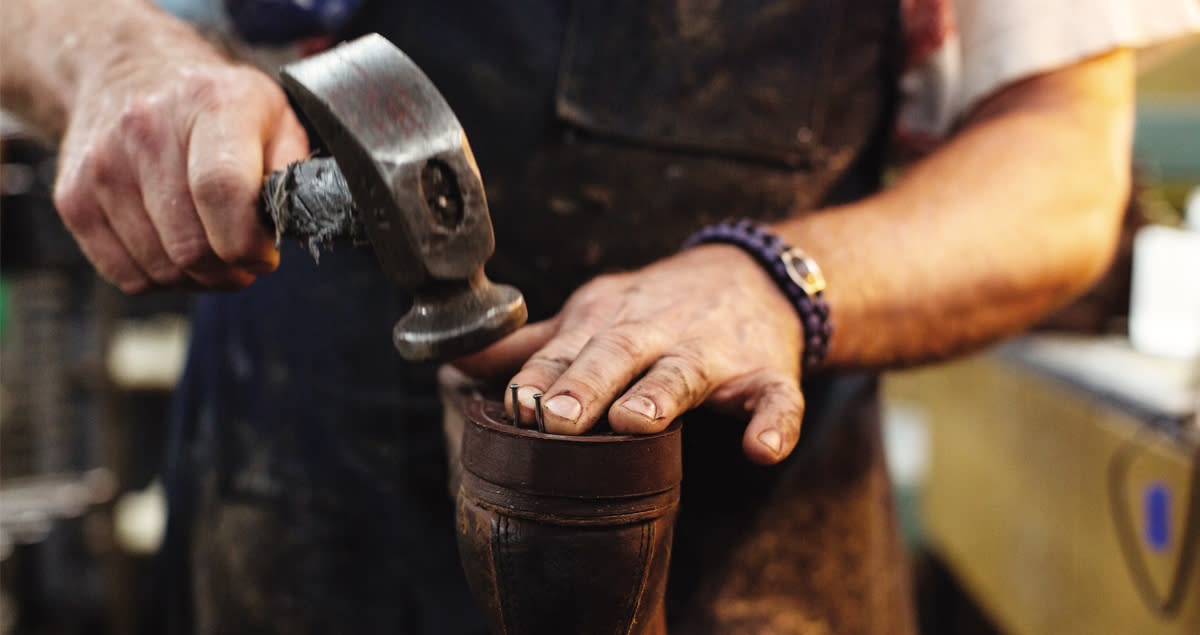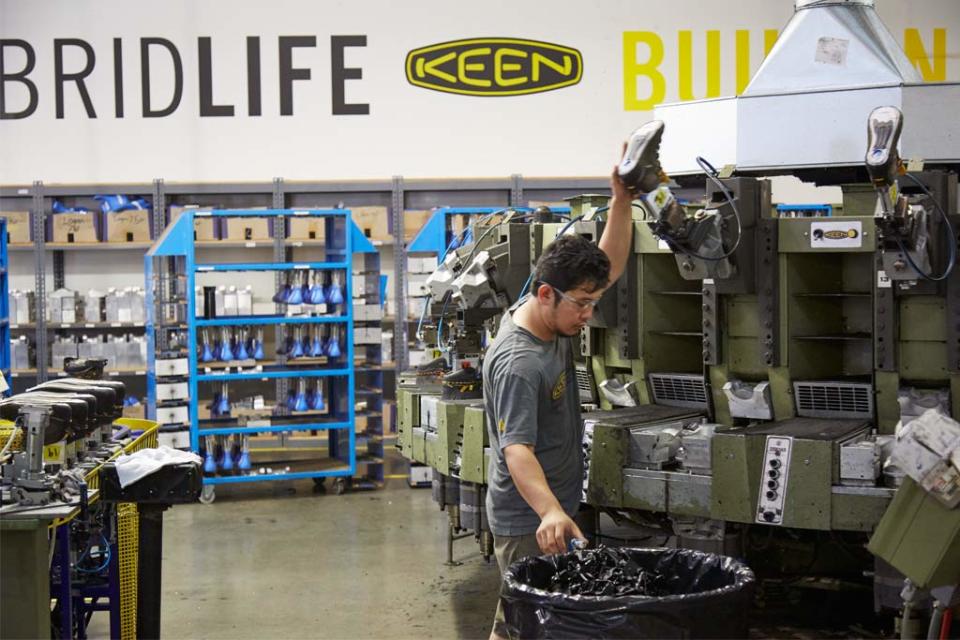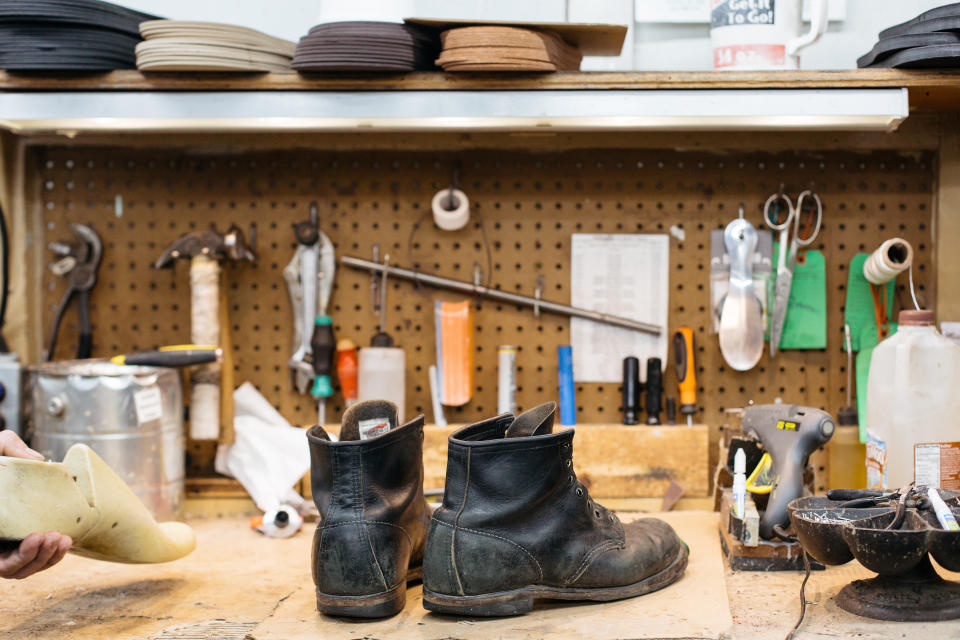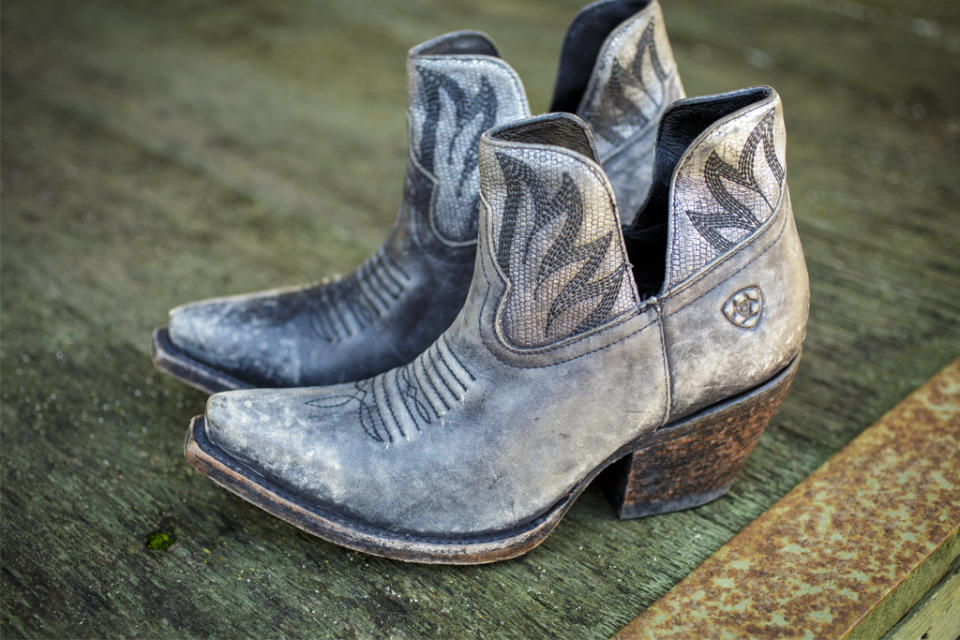Work Brands Are Using New and Ancient Methods to Keep More Boots Out of Landfills

For over 50 years, the core action steps of the environmental movement have aimed to reduce global waste and lessen the human impact on the planet.
While work boot makers don’t typically trumpet their sustainability efforts, many are ticking off those boxes with new and ancient methods that address product longevity. Here’s a look at how.
More from Footwear News
Dr. Martens Launches Reclaimed Leather Collection as Part of Sustainability Initiative
The History of Red Wing Shoes: High-Quality Boots, Military Footwear and More
1. Reduce Consumption
By definition, work boots face all manner of abuses on the job, from punctures and chemical abrasion to wear and tear from rugged surfaces.
Jeff Burns, president of Weinbrenner Shoe Co., maker of the 135-year-old Thorogood brand, said the lifespan of a pair of work boots varies depending on the type of use. “We’ve got people who work in the cement industry, and cement is very caustic, so they’ll be happy to get six months out of their boots. And then you’ve got some in trades like construction, where they’ll get three years,” he said.
That means consumers are constantly asking for shoes to last longer.
As Kevin Marks, a senior sales manager at Keen Utility explained, “In the work boot business, there’s comfort and durability. And the magic bullet is trying to do both.”
At Keen Utility, it’s addressing the issue by using a manufacturing technique in its Portland, Ore., factory called Keen Fusion. The direct-attach method fuses the outsole and upper together with an injected midsole. Marks said the benefit is that it prevents delamination, or the separation of the upper and sole. “You would probably ruin your ankle before you pull the midsole or the outsole off this boot,” he said.
Also, Marks noted the shoes are more flexible because they are one unit, so that improves the out-of-the-box comfort. And without the use of glues, they are free of PFAS (manmade chemicals that never break down).

Thorogood, best known for its classic welted boots, is also going more high-tech. For fall 2024, the brand is launching the premium Genesis series, which, among other things, features a direct-inject polyurethane midsole fused with a nitrile rubber outsole.
“The [nitrile rubber] compound is much more heat-resistant, much more chemical-resistant, much more slip-resistant and more durable than a standard rubber,” said Burns. “That technology and injection program should extend the life of the sole because of the compound that we use.”
2. Repair and Reuse
In today’s wear-and-toss culture, shoe repair has become a dying art, but for boot wearers it remains a highly desirable service.
At Red Wing Shoe Co., for instance, the repair shop crew in its Minnesota-based factory restores 35 to 40 pairs of boots daily, or up to 15,000 pairs per year.
“In recent years, we’ve been seeing surges in demand,” said Mike VanGoethan, vice president and chief services officer at Red Wing. “I’m not sure if that’s a byproduct of the pandemic and people wanting to invest more into their purchases, but we’re definitely seeing demand in excess of our capacity.”
As a result, he said, Red Wing is exploring opportunities to expand the service, especially as a means to improve the wait time. VanGoethan estimates it currently takes a few weeks to return repaired boots to customers.

To increase volume, the brand would need to invest in new equipment and staffing, though VanGoethan said the ideal candidates for this role are a bit of a unicorn.
“You’re typically looking for somebody that has tenure and experience, somebody who knows the ins and outs of all of our boots — and we make lots of different kinds of boots — and somebody who’s familiar with all of the equipment we use,” he said. “Some of our machinery is as old as we are. We have sewing machines in our factory that are over 100 years old.”
However, the company believes the demand for repair services will only increase, due in part to the economic and environmental benefits, as well as the growing interest in customization and personalization. VanGoethan noted that can range from embossing initials on the leather to attaching the outsole from another Red Wing boot. “We’re finding more and more consumers want to ‘make it their own,’” he said.
3. Resell to a New Home
Last year, Ariat International became one of the few bootmakers in the work and Western categories to enter the secondhand market.
The company announced in March 2023 it was partnering with resale tech company Archive to launch Ariat Reboot, a peer-to-peer marketplace that directly connects buyers and sellers. While Reboot is powered by Archive’s digital platform, it lives on the Ariat.com website and is connected to the Ariat product catalog. Additionally, all listings are reviewed by the Ariat Reboot team to ensure that the descriptions are accurate.
Jack Teague, vice president of footwear design, development and production said that in the year since Reboot’s launch, 721 units have been sold, powered completely by peer listings. The five most popular styles have been in the Western category, including men’s and women’s product.

“Launching [this initiative] was a big step toward Ariat’s sustainability efforts in creating circular fashion and keeping products out of landfills,” said Teague.
And the fact that customers are willing to pay for a used pair of boots speaks volumes as well, he added. “It’s validating to see that Ariat customers are loyal to the brand, and it’s a testament to how Ariat prides itself on craftsmanship and durability,” said Teague.
Best of Footwear News
Sign up for FN's Newsletter. For the latest news, follow us on Facebook, Twitter, and Instagram.

